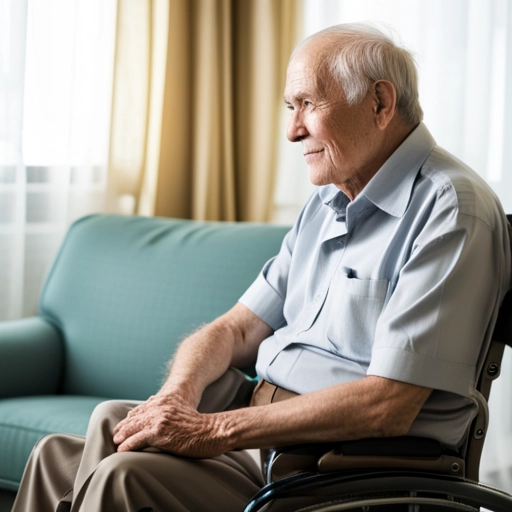
Apraxia of Speech in Adults: Causes, Symptoms, and Treatment Options
Apraxia of speech in adults, also known as adult acquired apraxia of speech or verbal apraxia in adults, is a motor speech disorder. It affects the brain’s ability to plan and coordinate the precise muscle movements needed for clear, fluent speech. Unlike other speech issues, it’s not caused by muscle weakness. Instead, the problem lies in the communication between the brain and the muscles involved in speaking.
Adult apraxia of speech often occurs after a stroke, brain injury, or neurological condition. The good news is that with the right treatment approach—typically guided by a speech-language pathologist—most individuals can make noticeable improvements in their speech clarity and confidence.
- Apraxia of Speech in Adults: Causes, Symptoms, and Treatment Options
What Is Apraxia of Speech in Adults?
Apraxia of speech —sometimes called adult speech motor planning disorder—occurs when the brain struggles to send the correct movement instructions to the speech muscles. Even though the individual may know exactly what they want to say, they find it challenging to form words accurately.
This condition is different from muscle-based speech disorders. With adult apraxia of speech, the muscles are typically healthy, but the “plan” the brain sends to these muscles is garbled or incomplete.
Key Characteristics Include:
- Difficulty coordinating lip, tongue, and jaw movements
- Inconsistent sound errors
- Groping or trial-and-error attempts to produce words
- Slower, halting speech patterns
Common Causes of Apraxia of Speech
Verbal apraxia in adults typically follows a neurological event or condition that damages the brain’s speech planning areas. Common causes include:
- Stroke: A blockage or bleed in the brain can disrupt the neural pathways controlling speech.
- Traumatic Brain Injury (TBI): An injury to the head can damage the regions of the brain needed for speech planning.
- Neurological Conditions: Disorders like Parkinson’s disease, ALS, or dementia can impact speech motor planning.
- Brain Tumors: Tumors in speech-related areas may interfere with the brain’s ability to plan movements.
Key Signs and Symptoms of Apraxia
Recognizing the signs of apraxia is crucial for early intervention. While symptoms vary in severity, they often include:
1. Inconsistent Speech Errors
A person might say a word correctly one moment and struggle with it the next. This inconsistency is a hallmark of adult apraxia of speech.
2. Difficulty with Longer Words
Complex or multi-syllabic words often pose greater challenges, leading to more noticeable pronunciation errors.
3. Groping for Sounds
Individuals may visibly “search” for the right mouth position, moving their lips and tongue repeatedly before producing a sound.
4. Slow, Halting Speech
Speech may be slower than average, with pauses between sounds and syllables as the brain tries to plan each movement.
5. Trouble Imitating Speech
Repeating words or phrases can be tough. While comprehension remains intact, the act of replicating specific sounds proves difficult.
6. Awareness of Errors
Most people with adult acquired apraxia of speech are aware of their mistakes, which can lead to frustration and anxiety.
Diagnosis and Assessment
A thorough evaluation by a speech-language pathologist (SLP) is essential to diagnose apraxia of speech in adults. The assessment may include:
- Medical History Review: Understanding any past strokes, injuries, or neurological conditions.
- Speech Evaluation: Repeating words, phrases, and sentences to identify patterns of errors and groping behaviors.
- Articulation Testing: Checking how well specific sounds and sound combinations are produced.
- Neurological Imaging: MRI or CT scans to identify areas of brain damage that may be linked to speech difficulties.
Effective Treatment Approaches
While there’s no “quick fix” for adult apraxia of speech, targeted therapy can significantly improve communication abilities. Treatment often involves:
1. Speech Therapy Techniques
- Articulatory Kinematic Therapy: Breaking down words into smaller units to practice precise movements repeatedly.
- PROMPT Therapy: Using touch cues on the face and neck to guide correct muscle movements.
- Melodic Intonation Therapy (MIT): Leveraging rhythm and melody to improve speech production.
2. Augmentative and Alternative Communication (AAC)
For severe cases, AAC tools such as communication apps, speech-generating devices, or picture boards provide a way to interact and express needs while speech improves.
3. Home Practice and Family Involvement
Daily exercises help reinforce progress made in therapy. Family members who understand the nature of verbal apraxia in adults can support communication efforts and reduce frustration.
Living with Apraxia: Prognosis and Support
The outlook for apraxia of speech in adults varies depending on individual factors like the severity of brain damage and how quickly therapy begins. Many people see meaningful improvements over time.
Emotional support is key. Because adult apraxia of speech can cause frustration, anxiety, or isolation, working with counselors, support groups, and encouraging family and friends can help maintain a positive mindset.
Frequently Asked Questions
1. Can Apraxia of Speech in Adults Improve with Therapy?
Yes. Many individuals make significant progress with consistent, targeted speech therapy.
2. How Is Adult Apraxia Different from Dysarthria?
Dysarthria is caused by muscle weakness, while adult apraxia of speech is a planning problem in the brain’s signaling process to those muscles.
3. Can Apraxia of Speech Affect Reading and Writing?
In some cases, yes. If a stroke or brain injury caused the apraxia, reading and writing skills might also be impacted.
4. How Long Does Therapy Take?
The timeline varies. Some notice improvement within months, while others need ongoing therapy for a longer period.
5. Is Apraxia of Speech in Adults Curable?
There’s no outright cure, but symptoms can be managed, and speech clarity can improve significantly with therapy and practice.
Final Thoughts
Apraxia of speech is challenging but not insurmountable. Early diagnosis, consistent therapy, and unwavering support from loved ones can make a tremendous difference. If you suspect you or someone you care about has adult apraxia of speech, seeking help from a qualified speech-language pathologist is the first step toward clearer communication and a richer quality of life.
